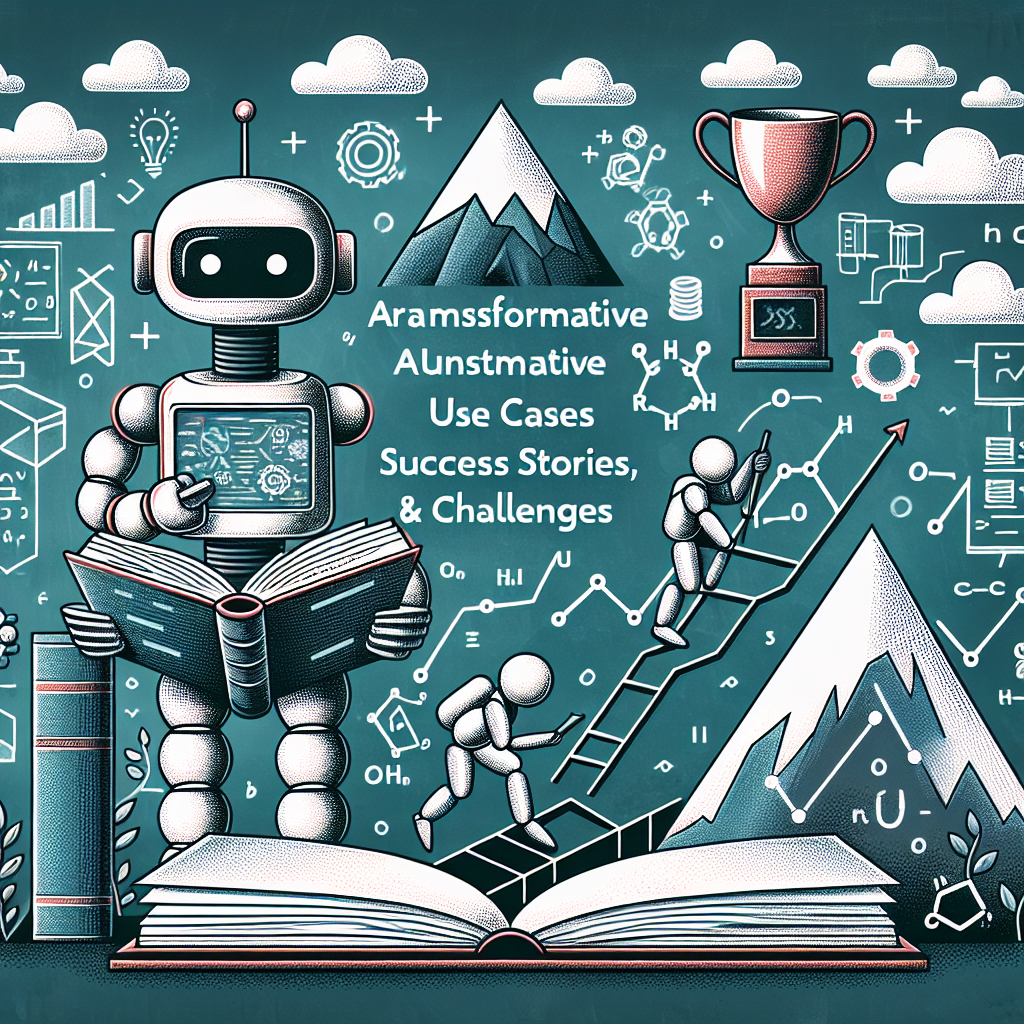AI in Education: Transformative Use Cases, Success Stories, and Challenges

```html
Artificial Intelligence (AI) is shaping the future of education by revolutionizing how educators teach and how students learn. From automating administrative tasks to providing personalized learning experiences, AI technologies are making education more efficient and accessible. In this blog post, we'll explore various use cases of AI in education, highlight success stories, and discuss the challenges and lessons learned.
Personalized Learning Experiences
AI is enabling personalized learning experiences by tailoring educational content to meet individual student needs. Platforms like Duolingo and Smart Sparrow use machine learning algorithms to adapt lessons based on students' strengths and weaknesses. This personalized approach helps in improving student engagement and learning outcomes.
However, creating personalized learning experiences with AI can be challenging. An educational institution faced issues when their AI system recommended content that was either too easy or too difficult for certain students, causing frustration. This highlighted the need for continuous refinement of AI algorithms to better understand and adapt to each student's learning pace.
Automating Administrative Tasks
AI is streamlining administrative tasks in education, freeing up educators to focus on teaching. Tools like IBM's Watson Education and Microsoft's Azure AI can automate grading, scheduling, and other repetitive tasks. This leads to increased efficiency and allows educators to dedicate more time to student interaction.
Despite its benefits, the automation of administrative tasks comes with challenges. A university experienced complications when their AI system misinterpreted data, resulting in scheduling conflicts and errors in grading. This emphasized the importance of human oversight and validation to ensure AI systems perform administrative tasks accurately.
Intelligent Tutoring Systems
AI-powered intelligent tutoring systems are providing students with tailored tutoring and support. Tools like Carnegie Learning and Squirrel AI use AI algorithms to offer personalized tutoring sessions, identify knowledge gaps, and provide targeted guidance. This helps students grasp complex concepts more effectively.
However, implementing intelligent tutoring systems isn't without obstacles. A school found that their AI tutor couldn't adequately address all students' diverse learning needs, leading to incomplete understanding of certain topics. This highlighted the necessity of integrating human tutors to complement AI systems for a more comprehensive learning experience.
Enhancing Accessibility
AI is enhancing educational accessibility for students with disabilities. Tools like Seeing AI by Microsoft and Google's Lookout use AI to provide real-time assistance to visually impaired students, making educational content more accessible. Similarly, AI-powered speech recognition tools aid students with hearing impairments by providing real-time captions.
Nevertheless, improving accessibility with AI has its challenges. An educational institution encountered issues when their AI tools failed to accurately interpret context, leading to misleading information for students with disabilities. This underscored the importance of refining AI algorithms to better understand and adapt to diverse needs.
Predictive Analytics for Student Performance
AI is harnessing predictive analytics to monitor and enhance student performance. Platforms like Brightbytes and Ellucian use AI to analyze student data, predict academic outcomes, and identify at-risk students early. This allows educators to intervene and provide necessary support promptly.
Yet, predictive analytics in education is not without its hurdles. A school district found that their AI system's predictions were sometimes inaccurate due to incomplete or biased data, leading to misguided interventions. This highlighted the need for high-quality data collection and ethical considerations in AI predictions.
Automated Language Translation
AI is breaking down language barriers in education through automated translation tools. Platforms like Google Translate and DeepL use advanced AI algorithms to translate educational content, enabling non-native speakers to access learning materials in their preferred language.
However, automated language translation poses challenges. An international school found that their AI translation tool sometimes provided inaccurate translations, causing misunderstandings among students. This illustrated the need for continuous improvement of translation algorithms and supplementary human translation to ensure accuracy.
The Future of AI in Education
The future of AI in education holds immense potential with expected advancements in adaptive learning technologies, AI-driven curricula, and enhanced virtual classrooms. AI's capabilities in data analysis, automation, and personalization will continue to drive significant innovations in the education sector.
To fully leverage AI's potential in education, addressing ethical considerations, ensuring data privacy, and fostering collaboration between educators and technologists are crucial. A balanced approach that combines AI technology with human expertise will be key to navigating the complexities and opportunities AI brings to education.
In conclusion, AI is transforming education through personalized learning experiences, automated administrative tasks, intelligent tutoring systems, enhanced accessibility, predictive analytics, and automated language translation. Success stories from platforms like Duolingo and IBM's Watson Education showcase AI's transformative impact, while challenges emphasize the need for continuous refinement and ethical practices. As AI technology advances, its role in education will expand, offering new opportunities for innovation, efficiency, and enhanced learning outcomes.
```



